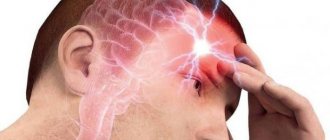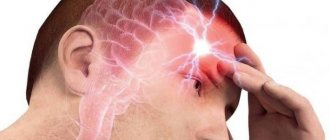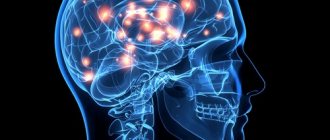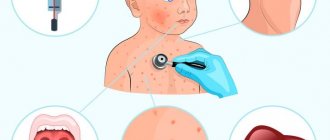Vegetovascular dystonia - a common disease in both adults and children. This pathology is not life-threatening. Its treatment is carried out mainly without the use of medications. The symptoms of the disease are individual in nature. To avoid the development of a real organic or mental illness, the patient must undergo a thorough examination.
Doctors, in the presence of mild symptoms in children, often diagnose vegetative-vascular dystonia. It is important for adults to understand that such a verdict is harmful to the health of the unborn baby. The basic unsatisfactory condition in such a situation is a malfunction of the capillaries in the brain and other segments of the human body. In principle, such a state of health is not a pathology, but a set of manifestations that show a picture of destabilization of the activity of the systems responsible for the patient’s life.
Causes
The causes of vegetative-vascular dystonia in children, as a rule, are hereditary phenomena and are caused by deviations in the work and structure of different parts of the autonomic nervous system, which are transmitted through the mother. The development of such syndromes in children can be facilitated by various complications during pregnancy and childbirth, for example, severe toxicosis, intrauterine infections, fetal hypoxia, injuries received during childbirth, encephalopathy. Protracted labor or, conversely, too rapid labor can also have a negative impact.
Also of particular importance in the development of VSD in a child are influences that traumatize the psyche, for example, his family may be too conflicting. Frequent and severe stress, excessive care, problems at school, and excessive stress during training also affect.
Predisposing factors that contribute to the development of vegetative-vascular dystonia in children include infectious, somatic and endocrine diseases, and allergic reactions. Affected by abnormal development of organs, skeleton, anemia, head injuries. As for infections, you should be most wary of neuroinfections and focal ones. The latter include caries, sinusitis, pharyngitis, and chronic tonsillitis.
In addition to these risk factors, there are also immediate triggers that can provoke the appearance of autonomic dysfunction. These may include unfavorable climatic and weather conditions, poor ecology, a sedentary lifestyle or, conversely, excessive debilitating physical activity, as well as vitamin deficiencies, disrupted work and rest schedules, poor nutrition, and hormonal imbalances during puberty. Most often, autonomic disorders are activated in children during the period of active growth, when there is a large load on their body, and the nervous system is not stable.
Diagnostics
Determining VSD is a serious multi-step process, since the syndrome is established by exclusion. The specialist should carry out a number of diagnostic measures and consider or reject other possible problems. Only after this a set of therapeutic actions is selected.
A neurologist conducts a preliminary examination of the baby and then refers the teenager or infant to other specialists. Such measures are necessary to exclude any other organic and psychopathic diseases.
Diagnosis of vegetative-vascular dystonia is carried out in 3 stages:
- Anamnesis collection. Developmental features are clarified, and the presence of bad habits in the baby or adults during gestation is established. Hereditary factors, as well as prenatal development, are important factors in the development of the problem.
- Attention is focused on the functioning of the central nervous system. The child is prescribed additional hardware tests - EEG, ultrasound, ultrasound.
- Based on the data obtained, experts exclude the presence of possible pathologies characterized by similar discomfort.
In the absence of pathological physical and mental disorders, a diagnosis of VSD is established. Based on the severity of the condition and the symptomatic picture, comprehensive treatment measures are carried out. Therapy takes a long time - more than 1.5–2 months.
Classification
When diagnosing VSD in a child, doctors take into account a number of criteria that help determine the form of the disorder. Depending on the etiology, the following types of syndrome are distinguished:
- neurotic (psychogenic);
- toxic-infectious;
- dishormonal;
- hereditary;
- mixed.
According to the nature of the disorders, they are distinguished:
- vagotonic;
- sympathicotonic;
- mixed.
Depending on the prevalence of pathological processes, vegetative-vascular dystonia can be local, systemic and generalized.
Prevention
- Strict adherence to the daily routine: eight-hour sleep, prolonged exposure to air, limited curriculum, minimal time spent in front of the TV and computer.
- Physical education classes with acceptable loads. Swimming, skating, skiing, tennis, and outdoor games are recommended.
- Balanced diet: no excess salt, sugar, fatty meat, baked goods. Various cereals, legumes, apricots, raisins, root vegetables, herbs and nuts should be present as a source of potassium and magnesium.
- Psychotherapy. Various methods of deep relaxation of the nervous system, eliminating emotional stress.
- Therapeutic massage of the collar area, electrophoresis.
- Multivitamins.
Read more about pediatric cardiology at the YugMed clinic
Symptoms
Symptoms of vegetative-vascular dystonia in children are very diverse. Specific signs are not identified, because of this, parents are often mistaken when the baby complains of being unwell. The manifestations of various symptoms can be perceived as characteristic signs of diseases of different systems and organs.
You should be wary if your child has the following symptoms:
- mood changes sharply - anxiety, panic, tearfulness, fears and apathy;
- decreased activity;
- problems with sleep - either drowsiness or, on the contrary, insomnia;
- the skin becomes dry, acne appears due to the disruption of the sweat and sebaceous glands;
- sudden changes in temperature;
- diarrhea, nausea and vomiting, increased or, conversely, decreased salivation, decreased appetite, abdominal pain;
- shortness of breath, breathing problems.
Vegetative-vascular dystonia can be either a primary disease (develops independently) or secondary (that is, it manifests itself due to other diseases). The severity of the disorder depends on how many symptoms appear and their severity.
Vegetative-vascular dystonia can manifest itself in the form of cardioneurosis. Most often it takes the following forms:
- hypertensive. The main symptom is increased blood pressure;
- hypotonic. Blood pressure decreases;
- cardiac. The rhythm of the heart is disrupted;
- mixed. All the previously listed symptoms appear in varying degrees and combinations.
Also, VSD in children can take the form of respiratory neurosis. In this case, breathing problems appear: lack of oxygen, frequent sighs, shortness of breath, pauses when exhaling.
If VSD has affected the digestive system, then problems with digesting food appear: dyspeptic disorders, hiccups, abdominal pain. With spasms of the esophagus, chest pain occurs, which is aggravated by swallowing. Children often experience dyskinesia of the bile ducts with the outflow of bile.
There are also other options for the manifestation of VSD in childhood:
- thermoregulation is disrupted. During the day the temperature rises, but only slightly, and at night it returns to normal. Also, if you check the temperature in different armpits, the indicator will be slightly different. The child may complain of chills;
- problems with urination. Emptying the bladder occurs rarely, but in large portions. The child strains at this. The completely opposite situation is also possible;
- neurotic symptoms. This can be anxiety, lethargy, hysterics, fears, apathy, depression, fatigue and even hypochondria.
With vegetative-vascular dystonia, problems with vision, hearing, and approach may occur. There is often a fear of dying and a feeling of hopelessness. A crisis can be triggered by hormonal imbalances or severe overstrain (both physical, mental, and emotional). For some it is related to the weather.
When to see a specialist
You should be wary if the following symptoms appear in a child:
- poor appetite (especially if the child is overweight);
- physical inactivity;
- fear of enclosed spaces;
- feeling of lack of oxygen;
- pain in the abdomen or chest;
- poor cold tolerance;
- nausea;
- allergies;
- pale skin;
- feeling of a lump in the throat;
- change in gait;
- increased sweat secretion;
- frequent or, conversely, rare urge to urinate;
- swelling under the eyes;
- constipation or diarrhea that occurs frequently;
- frequent changes in mood.
To make a diagnosis, you must first contact a pediatrician. If necessary, he will send you for additional consultation with a neurologist, cardiologist, endocrinologist, otolaryngologist, ophthalmologist, gastroenterologist. You can make an appointment with these doctors at JSC “Medicine” (academician Roitberg’s clinic), which is located in the center of Moscow.
Vegetative-vascular dystonia in adolescents and children
The disorder can occur already in early childhood, which is important to take into account for parents who send their child to kindergarten or notice changes in the teenager’s behavior. The first symptoms may appear when the child goes to kindergarten or finds himself in a stressful situation.
“There are times when a child feels uncomfortable in kindergarten,” explains neurologist Olesya Bryukhanova. “And as a defensive reaction, his temperature rises or vomits. These symptoms develop only in kindergarten, while at home the child feels well and has no signs of acute respiratory viral infection or intestinal disorder.”
Temperature during VSD is not the only sign of a child’s disturbed condition. Such children, as a rule, are capricious, do not want to go to kindergarten, often get sick and often come into conflict with other children. They have noticeable mood swings, and they tolerate any stress, be it physical or intellectual, worse than their peers.
In adolescence, hormones come into play, the need for self-affirmation in a team, and constant comparisons of oneself with others. When these comparisons are not in your favor or conflicts regularly arise with peers and parents, the load on the nervous system increases. The psyche becomes unstable, which is manifested in girls’ behavior by tearfulness, nervousness, and rudeness towards parents and teachers. In boys, there are outbursts of anger and pronounced negativity towards everything that surrounds the teenager. And if a teenager cannot show aggression openly, another extreme occurs - panic attacks, which are no less difficult to experience.
This behavior is often attributed to hormonal surges and age-related characteristics. But it's important to understand that hormonal changes don't have to manifest themselves this way. Moreover, they are more likely to create the ground for the development of the disorder, and the parents’ task is to see the problem in time. If a teenager has become emotionally unstable, his behavior has changed, he blushes and turns pale easily, experiences hot flashes and sweats a lot, and has blood pressure surges, you cannot expect this to go away on its own. In this case, characteristic symptoms of a nervous system disorder appear, which can and must be stopped at the very beginning of development.
“In my practice, there was a case when a 17-year-old boy suffered from high blood pressure,” comments neurologist Olesya Bryukhanova. “He was registered with a cardiologist, but the cause of arterial hypertension remained unclear for a long time. In the process of communicating with the patient, it became clear that he felt anger towards his parents. And since he had to constantly restrain his emotions and endure this internal conflict, he developed a syndrome. When we eliminated the psychological problem, both the blood pressure and the patient’s well-being returned to normal.”
Diagnosis
In addition to studying the child’s complaints, they check the indicators of the body’s functioning, which can be obtained through the following studies:
- ECG;
- pharmacological tests;
- orthostatic tests;
- monitoring;
- EEG;
- REG;
- EchoEG;
- rheovasography.
During diagnosis, the specialist excludes diseases that have similar clinical manifestations: infectious diseases (including endocarditis), rheumatism, mental disorders, bronchial asthma, etc.











